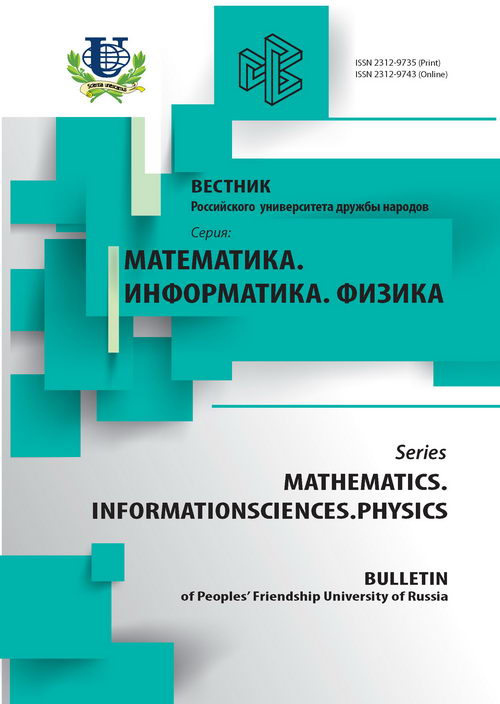On the Approximate Solving of the Differential Equations which General Solutions Depend on a Constant of Integration Algebraically
- Authors: Malykh MD1
-
Affiliations:
- Lomonosov Moscow State University
- Issue: No 3 (2015)
- Pages: 5-9
- Section: Articles
- URL: https://journals.rudn.ru/miph/article/view/8600
- ID: 8600
Cite item
Full Text
Abstract
Methods of analytically theory of ordinary differential equations are based on the analysis of singularities, but the most popular method for the numerical solving, that is the method of finite differences does not work in neighborhood of singularities. However Painlevé gave an algebraic method for the solution of the differential equations in finite terms and general solutions of this equations depend algebraically on a constant of integration. This approach which was presented as Galois theory on the contrary can be well combined with method of finite differences. It is well known, the ordinary differential equation of form y′ = f(x,y) with this property can be algebraically transformed by substitution to Riccati equation. Euler scheme yn+1 = yn + f(xn,yn)Δx always determines (1,k)-correspondence between neighboring layers. But exact solution of Riccati equation determines (1,1)-correspondence between any layers and thus we can write a scheme which determines (1,1)-correspondence between neighboring layers. In this case anharmonic ratio of 4 points does not change from layer to layer not only for exact solution but also for approximate solution. Thus if an exact solution has a pole then the approximate solution passes through infinity without accumulation of an error. In the presented article this property of (1,1)-scheme will be illustrated by two examples: with and without solution in elementary functions. So the cause of destruction of the approximate solution near a pole is put in Euler scheme itself. In more general case when exact solution of ordinary differential equation depends algebraically on an integration constant we can write a scheme which determines (l,l)-correspondence between neighboring layers. Approximate solution which is found on this way passes through movable algebraic singularities without accumulation of an error.
About the authors
M D Malykh
Lomonosov Moscow State University
Email: malykhmd@yandex.ru
Faculty of Materials Sciences; Department of Applied Probability and Informatics Peoples’ Friendship University of Russia Miklukho-Maklaya str., 6, Moscow, Russian Federation, 117198
References
Supplementary files















